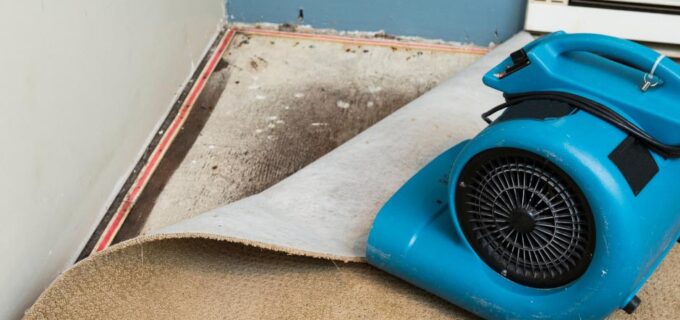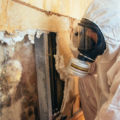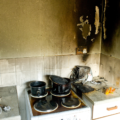Understanding Water Damage Restoration: A Critical Service for Modern Environments
Water damage restoration is an essential service in today’s urban landscapes, especially in a bustling city-state like Singapore. It addresses the immediate and long-term effects of water intrusion in both residential and commercial properties. This process goes beyond mere water removal; it encompasses a comprehensive approach to restore structures and contents to their pre-damage condition. It’s a meticulous endeavor involving the identification of water sources, extraction of water, drying and dehumidifying affected areas, cleaning, sanitizing, and finally, repairing or restoring the damaged property. This practice is not just about fixing what’s broken; it’s about reinstating safety, functionality, and comfort to the impacted spaces.
Big Red Singapore: Your Trusted 24-Hour Water Damage Restoration Partner
In the dynamic and often unpredictable environment of Singapore, Big Red Singapore stands out as a leading 24-hour disaster restoration service. Our team is committed to providing rapid, reliable, and effective solutions to water damage scenarios that affect homes, businesses, and various institutions across the city. Our expertise is not just in handling the technical aspects of restoration but also in understanding and addressing the challenges and stress that such situations bring to property owners and occupants.
At Big Red Singapore, we pride ourselves on our skilled professionals who bring a wealth of experience to every task. Equipped with advanced tools and techniques, our team is adept at managing a range of water damage situations – from the aftermath of severe weather events to internal issues like pipe bursts or appliance leaks. Our swift response and efficient management of these incidents help minimize the impact and expedite the recovery process.
Our approach is grounded in a deep understanding of the unique needs of Singapore’s diverse properties, whether it’s a high-rise residential complex, a commercial establishment, or an industrial facility. We recognize that every water damage situation is unique and requires a tailored strategy. This understanding guides our process, from the initial assessment to the final stages of restoration.
Commitment to Excellence: Ensuring Client Satisfaction in Water Damage Restoration
At Big Red Singapore, our commitment extends beyond restoring physical structures. We emphasize clear communication, transparency, and a customer-focused approach throughout the restoration process. Recognizing the stress and disruption caused by water damage, we strive to provide not just technical solutions but also peace of mind to our clients. Our goal is to ensure that every restoration project we undertake is handled with the highest level of professionalism and care, reaffirming our reputation as Singapore’s dependable 24-hour disaster restoration service.
Water Damage Complexities: Understanding Impact and Risks
Water damage, often underestimated, poses a myriad of risks that can compromise the integrity of buildings, affect health, and disrupt business operations. Understanding these risks is crucial for property owners and managers to take appropriate preventive and remedial measures.
Impact on Property and Structural Integrity
Water damage can have profound and lasting effects on buildings and their contents. When water infiltrates a structure, it doesn’t just leave a wet mess; it can weaken building materials, leading to potential structural failures. Wood can rot, drywall can crumble, and metals can corrode, all compromising the structural integrity of a building. Additionally, furnishings, electronics, and other contents can suffer irreversible damage, leading to significant financial loss and inconvenience.
Electrical Hazards and Risks
One of the most immediate dangers of water damage is its impact on electrical systems. Water and electricity create a hazardous combination, posing severe risks such as short circuits and electrical fires. In cases of flooding or significant water intrusion, the risk of electrocution becomes a critical concern. Immediate shut-off of the power supply in affected areas is essential to prevent accidents and further damage.
Mold and Health Hazards: A Silent Threat
The presence of excess moisture creates a conducive environment for mold and bacteria growth. These organisms can proliferate within 24 to 48 hours of water exposure, posing serious health risks. Mold spores can trigger allergic reactions, respiratory problems, and other health issues, particularly in individuals with weakened immune systems, the elderly, and children. The remediation of mold is not only about cleaning but also about ensuring a healthy living or working environment.
Safety Concerns: Beyond the Obvious
Water damage brings with it numerous safety concerns. Slippery surfaces can lead to falls and injuries, a common aftermath in such scenarios. In more severe cases, especially in instances of flooding, there is a risk of building collapse, necessitating immediate evacuation and professional assessment. Ensuring the safety of occupants is paramount in any water damage situation.
Business Interruptions: The Economic Toll
For businesses, water damage can lead to significant operational disruptions. From damaged inventory to the loss of critical equipment, the impact can be substantial. The downtime during restoration can lead to loss of revenue and, in some cases, loss of customers. Quick and efficient restoration services are crucial to minimize these interruptions and help businesses return to normal operations as swiftly as possible.
Understanding these risks underscores the importance of a swift and professional response to water damage. It is not just a matter of property repair but also of ensuring safety, health, and continuity in both residential and commercial settings. Big Red Singapore, with its expertise and resources, stands ready to address these challenges, providing peace of mind and reliable solutions to those affected by water damage in Singapore.
The different types of Water Damage: Floods, Leaks, and Their Challenges
Water damage, a pervasive issue, manifests in various forms, each presenting unique challenges. Understanding these differences is key to implementing the right restoration strategies.
Flooding: Nature’s Unpredictable Impact
Flooding stands as one of the most devastating forms of water damage. Often triggered by weather events like torrential rains, typhoons, or external water source breaches, floods can swiftly engulf properties. This type of water damage is not just about the immense volume of water; it’s about its potential contamination with mud, bacteria, chemicals, and other hazardous materials. The aftermath of flooding requires not just water extraction but a comprehensive approach that includes sanitizing and restoring the affected areas. In Singapore, where sudden heavy rains can lead to flash floods, being prepared for such events is essential for both residential and commercial property owners.
Leaks: The Hidden Troublemakers
Leaks represent a more insidious form of water damage. Often stemming from internal sources like faulty pipes, malfunctioning appliances, or compromised roofing, leaks can go unnoticed for extended periods, causing significant damage over time. Unlike the immediate and apparent destruction caused by flooding, leaks can slowly undermine the structural integrity of a building, leading to issues like mold growth, rotting wood, and a host of other problems. Identifying and addressing leaks early is crucial to prevent more extensive damage and costly repairs. Regular maintenance and inspections are key in mitigating the risks posed by these hidden threats.
Each type of water damage, whether it’s the overwhelming force of a flood or the creeping threat of a leak, demands a tailored response. At Big Red Singapore, we are equipped to handle both these scenarios with expertise and efficiency. Our team is trained to quickly assess the situation, determine the best course of action, and restore your property to its pre-damage state, ensuring safety and peace of mind.
Understanding Water Damage: From Clean to Contaminated
In the realm of water damage restoration, it’s crucial to identify the type of water involved as it dictates the approach and safety measures required. Broadly classified into three categories, each type presents unique challenges and necessitates specific responses.
Category 1: Clean Water – When Safety Meets Simplicity
Category 1 involves ‘clean water,’ which is water that does not pose an immediate health threat. This type of water typically originates from sanitary sources, such as a broken water supply line, overflowing sinks, or even rainwater. Although considered the least hazardous, prompt action is still essential to prevent the water from degrading into more dangerous categories. The response involves stopping the water source, removing the water, drying the area, and then cleaning and sanitizing. The risk of mold development is also a concern if not addressed swiftly.
Category 2: Gray Water – A Step-Up in Complexity
Gray water, or Category 2, contains a significant degree of chemical, biological, or physical contaminants. Sources include discharge from appliances like dishwashers or washing machines, sump pump failures, or urine-containing toilet overflows. The risks associated with gray water include skin irritation and potential health hazards upon exposure. The treatment process includes not just water removal and drying but also thorough cleaning and sanitizing of the affected areas to eliminate contaminants and mitigate health risks.
Category 3: Black Water – Handling with Utmost Caution
Category 3, known as ‘black water,’ is the most dangerous, containing harmful pathogens and toxins. Sources are often sewage, seawater, rising floodwaters from rivers or streams, or groundwater. This category poses serious health risks, including bacterial and viral infections. The handling of black water requires specialized equipment and safety gear, along with strict adherence to health and safety protocols. The restoration process involves extensive cleaning, sanitizing, and often, the replacement of structural elements and furnishings that have been contaminated.
In each of these scenarios, the expertise and rapid response of a professional water damage restoration team like Big Red Singapore are crucial. Our team is equipped to accurately assess the water category and implement the appropriate restoration strategy, ensuring the safety and well-being of property occupants while restoring the property effectively.
The Five-Phase Approach to Effective Water Damage Restoration
Effective water damage restoration is a meticulous process that requires precision, expertise, and a comprehensive approach. At Big Red Singapore, we follow a structured protocol to ensure every aspect of water damage is thoroughly addressed, restoring safety and normalcy to affected areas.
Damage Assessment: The Foundation of Effective Restoration
The initial step in our restoration process is a thorough damage assessment. Our team meticulously inspects the affected property to determine the extent and type of water damage. This assessment includes identifying the source of water, categorizing the water type (clean, gray, or black), and evaluating the impact on structures and contents. Using state-of-the-art moisture detection equipment, we map out the affected areas to formulate a precise and effective restoration plan. This initial evaluation is crucial for determining the necessary steps and resources required for the restoration process.
Water Removal: Prompt Action for Damage Mitigation
Following the assessment, our immediate focus shifts to water removal. Employing powerful pumps and vacuum units, we efficiently extract standing water, including hidden moisture in carpets, flooring, and walls. This prompt removal is vital to prevent further damage and the onset of mold and other issues.
Drying and Dehumidification: Ensuring a Thoroughly Dry Environment
After water extraction, we proceed to drying and dehumidification. This step is critical to eliminate residual moisture from the property. Using industrial-grade air movers and dehumidifiers, we ensure all hidden damp spots are thoroughly dried. This process is carefully monitored to guarantee the property is returned to an acceptable moisture level, safeguarding against mold growth and structural weakening.
Cleaning and Sanitizing: Restoring Health and Hygiene
Once the area is dry, we focus on cleaning and sanitizing. Our team employs various techniques, including air scrubbing and fogging, to address any contamination caused by water damage. We meticulously clean, sanitize, and deodorize affected areas and belongings, ensuring a hygienic and safe environment.
Repairs and Restoration: Rebuilding and Renewing
The final phase is repairing and restoring the damaged property. This involves anything from minor repairs like replacing drywall and installing new carpet, to major renovations and reconstructions. Our skilled craftsmen and technicians work diligently to bring your property back to its pre-damage condition, paying close attention to detail and quality.
At Big Red Singapore, each step in our water damage restoration process is executed with professionalism, care, and efficiency, ensuring that every project meets the highest standards of quality and safety. Our goal is not just to repair the damage but to provide peace of mind and a sense of security to our clients.
Advanced Equipment for Optimal Water Damage Restoration
In the intricate process of water damage restoration, the utilization of specialized equipment is not just a preference but a necessity. At Big Red, we take pride in being Singapore’s largest holder of drying and decontamination equipment, ensuring that every restoration project is equipped with the best tools for effective and efficient recovery.
Equipment Overview: Tools Engineered for Precision and Efficiency
Our arsenal of restoration equipment is extensive and tailored to meet various demands of water damage scenarios. This includes high-capacity air movers that facilitate rapid drying of surfaces and furnishings, and industrial-grade dehumidifiers that efficiently remove moisture from the air, preventing secondary water damage. We also utilize infrared cameras for detecting hidden moisture and thermal foggers for deodorizing and sanitizing. For scenarios involving contaminated water, our equipment range extends to HEPA-filtered air scrubbers and specialized cleaning agents that ensure thorough decontamination.
The Imperative of Proper Drying: Averting Long-Term Issues
A crucial element in our restoration process is the emphasis on proper drying. Incomplete drying can lead to persistent problems like mold growth, which not only damages property but also poses significant health risks. Mold can develop within 24 to 48 hours in moist conditions, making rapid and thorough drying imperative. Our advanced drying equipment is designed to expedite this process, ensuring that every nook and cranny is free from moisture. By preventing mold and further structural damage, we safeguard not just the physical integrity of your property but also the health and well-being of its occupants.
At Big Red, the combination of our extensive equipment and expert techniques represents our commitment to delivering unparalleled restoration services. We understand that the right tools, when used effectively, can make all the difference in turning a daunting restoration task into a manageable, successful project.
Case Studies: Water Damage Scenarios in Singapore
Residential Flooding from Heavy Rains
Scenario: A residential area in Singapore experienced severe flooding due to intense rains, severely impacting a family’s home. The property faced extensive water intrusion, leading to significant damage to the interior, furniture, and personal belongings.
Solution: Big Red’s team swiftly initiated the restoration process with comprehensive water extraction. Advanced air movers and dehumidifiers were deployed to dry the premises thoroughly. Attention was paid to salvaging valuable items, followed by a thorough cleaning and sanitizing to ensure the living environment was safe and hygienic. The final phase involved structural repairs, effectively restoring the home to its pre-flood condition and ensuring the family could return to their normal life.
Commercial Property Damage from Pipe Burst
Scenario: A significant water damage incident occurred in a high-rise office building in Singapore due to a pipe burst. The emergency affected multiple floors, damaging office interiors, furniture, and critical documents.
Solution: The team responded immediately, focusing on containing the water spread and efficiently extracting it. Specialized drying techniques were applied to salvage important documents and electronic equipment. The restoration process included repairing the damaged sections of the office and ensuring all affected areas were returned to a functional state. This approach minimized downtime and helped the business resume operations swiftly.
Retail Space Affected by Sewage Backup
Scenario: A major retail space in Singapore faced a critical situation due to a sewage backup. This event created a hazardous environment, posing health risks and potentially damaging merchandise.
Solution: Addressing the issue, Big Red’s team conducted a thorough removal of sewage followed by an extensive cleaning and sanitization process. Special focus was given to areas of high customer interaction and merchandise displays to ensure a completely hygienic environment. The prompt and effective handling of the situation allowed the retail space to reopen quickly, ensuring customer safety and confidence in the brand.
Electrical Hazard in Industrial Setting
Scenario: An industrial facility in Singapore encountered water leakage, leading to significant risks associated with electrical systems and machinery.
Solution: Safety was the foremost priority. The team collaborated with electrical experts to secure all systems before commencing the water extraction process. Drying and dehumidification were meticulously carried out, particularly around sensitive machinery and electrical panels. The intervention also included implementing measures to prevent future water ingress, ensuring the ongoing safety and operational integrity of the facility.
Historic Building Restoration After Flooding
Scenario: A historic building in Singapore was adversely affected by floodwaters, requiring delicate restoration to preserve its architectural heritage.
Solution: The team approached this challenge with specialized restoration techniques, focusing on gentle water removal and drying processes that safeguarded the building’s unique historical features. Efforts were made to repair and restore antique elements, maintaining the building’s historical essence. This sensitive and thorough approach ensured that the building retained its cultural significance and historical value post-restoration.
Choosing Big Red: 24/7 Expertise in Water Damage Restoration
Rapid Response: Ensuring Timeliness in Crisis
In the event of water damage, every moment counts. At Big Red, we understand the critical nature of swift action. Our 24-hour service ensures that we are always ready to respond at a moment’s notice, minimizing damage and accelerating the restoration process. Our rapid response team is equipped with the necessary tools and expertise to tackle emergencies efficiently, reducing the impact and stress associated with such events.
Expertise and Experience: A Legacy of Trust
Big Red stands as the most experienced disaster recovery service in Singapore, having handled the highest number of cases. Our team is not just skilled; they are seasoned experts in managing a wide spectrum of water damage scenarios. This depth of experience means we bring a wealth of knowledge and proven strategies to every project, ensuring effective and reliable restoration.
Commitment to Safety and Quality: Your Assurance
Our commitment to safety and quality is unwavering. We prioritize the well-being of our clients and their properties, adhering to stringent safety protocols and delivering high-quality service. In entrusting your restoration needs to Big Red, you are choosing a partner dedicated to restoring not just your property but also your peace of mind. Our reputation is built on a foundation of trust, safety, and excellence, making us the preferred choice for water damage restoration in Singapore.
Your Partner in Water Damage Restoration
In this blog, we’ve explored the critical aspects of water damage restoration, from understanding its varied forms and risks to the comprehensive process employed by Big Red Singapore. Our dedication to rapid response, expertise in handling diverse scenarios, and commitment to safety and quality stand us apart as leaders in this field. If you’re facing water damage challenges, remember that timely, expert intervention is crucial.
For immediate and professional water damage restoration services, reach out to Big Red Singapore. Contact us at info@bigred.com.sg or call us at +65 6241 9443. We are here to provide you with reliable, efficient, and high-quality solutions to protect your property and ensure your peace of mind.
Learn more: Mastering Fire Restoration: Your Guide to Professional Recovery Services




